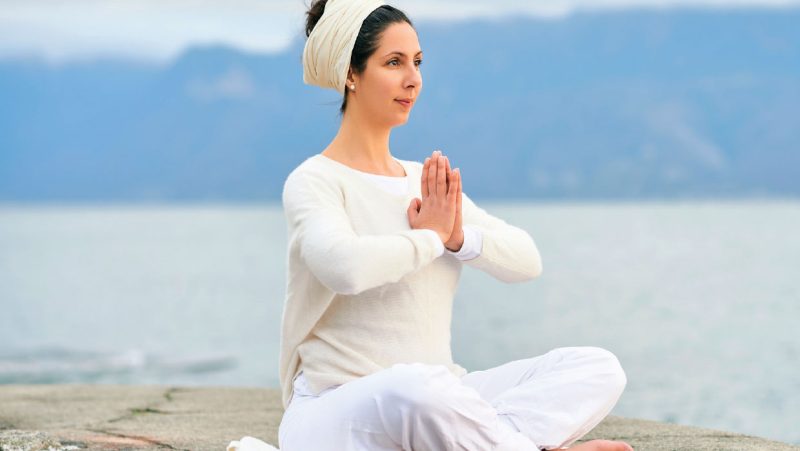
5 Burnout Tips for Empaths & For Highly Senstive people
Transforming Energy, Embracing Self-care, and Finding Community - By Linda Kleida Romera
Reading time: 4 minutes
Burnout can affect anyone. It is a state of physical, mental and emotional exhaustion due to prolonged stress - This can make us feel overwhelmed, drained and unable to enjoy life.
Empaths and Highly Sensitive People (HSPs) are sensitive people. Our daily energy exchanges are often very deep. We may feel emotions intensely and have a deeper sensitivity to subtleties because of how we process sensory information. As you feel, hear, see, notice, engage and consume your daily interactions on many levels, this may lead to feeling overwhelmed and burnout sooner than non-HSPs and non-empaths.
Being a sensitive person is not a weakness. If we learn to manage our energy, embrace our sensitivity and use the right tools, we can avoid burnout and thrive!
⒈ Embrace life changes - Burnout is an opportunity for Self-transformation
Burnout is a big sign that something is not working in our life. This can be for many reasons - in one, some or all areas of our life. So, what if we take this as an opportunity to hold space for our Self and re-evaluate our life now and how we can start to take the first steps to create a meaningful change?
Change is often scary and comes with challenges and choices. However, we can also embrace it as part of our learning process. This can be a way to start to trust our Self deeper, gain clarity in what truly matters and build confidence.
⒉ Energy Management through the Chakras
The beauty of working with our energy system is that we return the focus to our Self, working from the inside first and creating flow. Energy management is often the missing piece of the puzzle when we are exploring ways to prevent and recover from burnout. Alongside stress management tools, we can gain a deeper understanding of how and why certain things work for us while others don't. This is often why many return to burnout.
One way of working directly with energy management is getting to know how we use our Chakra system*. The Chakras stem from many traditions, especially from the ancient yogic sciences. In Sanskrit, the word “chakra” means “wheel” and refers to the energetic system of the body. These wheels of spinning energy each correspond to certain areas of our health and well-being.
Although there are many Chakras* in our energy system, we often focus on the 7 main Chakras in most traditions. In Kundalini yoga, we include the Aura as our 8th Chakra. They interact with each other and each person will have their unique energy patterns.
By embracing yoga and holistic health, we can connect to our energy system and understand how we can use it for stress management and healing. A good place to start to get to know your dominant Chakra/s - We can then see how we can explore our strengths and how we naturally channel or consume energy in our daily lives.
⒊ Grounding & Self-care
Self-care is essential. A tip that I often find helpful is to connect with your dominant element to explore which Self-care tools and yoga style work best for you. Knowing your dominant Chakra can give you a clue to this.
An example: If your dominant element is Fire, using the qualities of this element in Self-care practices can help you release stress - To choose active exercises, work with heat, find healthy ways to channel energy outwards while being mindful of not over-stimulating your Fire and burnout quickly.
We can start to gain awareness through grounding into our body - Exploring our senses, our breath, feeling our heartbeat, by knowing where we hold stress and so much more. There are many ways to enjoy grounding - Such as creativity, dancing, walking and exercise. Even just a few minutes can make a big difference. My favourite way to deepen my daily grounding practice is through yoga.
If you enjoy yoga, finding the right yoga style for you is essential - If you are new to yoga, try different classes and teachers. Trust your intuition as each class and teacher has its unique energy. Even if you have been practising yoga for many years, many yogis find that their connection to different yoga styles and what inspires them also evolves.
⒋ Tuning in to your new values
As we grow and create life changes, our values and needs may also change. This is a natural part of Self-transformation. Burnout often presents the opportunity to honestly look at what our old needs and values were and how we can now make choices to honour our new ones.
This often requires a mindset shift - A time to confront our limiting belief systems, our boundaries, the way we connect to people in our lives, the way we view money and how we use our daily energy to consume or create. All of these areas are part of how we exchange energy in our daily lives and affect our energy and stress levels.
⒌ Support and Community
Don’t forget, you are not alone! It can often feel like we are when we are in the middle of burnout and transformation - It is well worth sharing it with people who you trust. If it is in your workplace, this may also be an opportunity to share and make changes where needed. You can also seek the help of professionals - like a talking therapist or burnout coach.
Additionally, this could be a beautiful time to start new activities. If there is something that you have always wanted to do (a new yoga class, a dancing course etc.) then this is a great way to get out of your comfort zone, explore your creative energy, have fun and meet new people.
By being very gentle with our Self in the healing process, we build slow and meaningful steps forward, while honouring the lessons along the way.
*commission earned from this link






